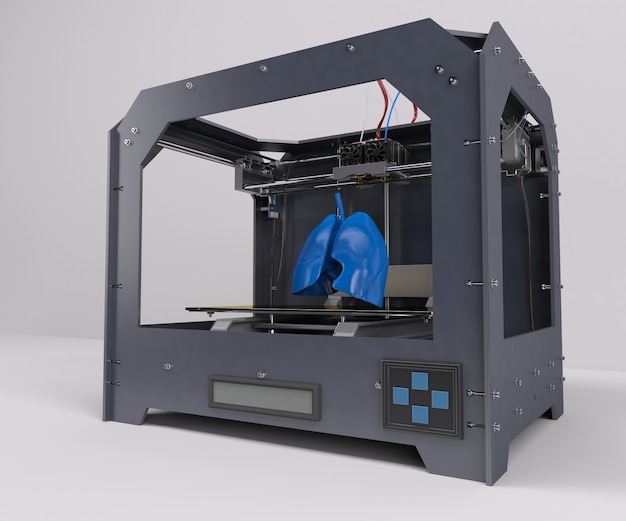The Future of Personalized Medicine
The medical device industry is on the cusp of a revolution, driven by advances in 3D printing and biomaterials. These technologies are enabling the development of personalized medical devices, tailored to individual patients' needs, and transforming the way healthcare is delivered. In this article, we'll explore the current state of personalized medicine, the role of 3D printing and biomaterials, and the potential impact on patient outcomes.
What is Personalized Medicine?
Personalized medicine, also known as precision medicine, is an approach to healthcare that involves tailoring medical treatment to an individual's unique genetic, environmental, and lifestyle factors. This approach recognizes that each person's biology is distinct and that a one-size-fits-all approach to medicine is often ineffective.
According to Dr. Francis Collins, Director of the National Institutes of Health, "Personalized medicine is about getting the right treatment to the right person at the right time." "It's about understanding the underlying biology of a disease and using that information to develop targeted therapies that are more effective and have fewer side effects."

The Role of 3D Printing in Personalized Medicine
3D printing is a key technology driving the development of personalized medical devices. By creating customized models of organs and tissues, 3D printing enables the design and testing of medical devices that are tailored to an individual's specific needs.
One of the most significant applications of 3D printing in personalized medicine is in the development of customized implants and prosthetics. For example, 3D-printed hip replacements can be designed to match an individual's unique anatomy, reducing the risk of complications and improving outcomes.
Advances in Biomaterials
Biomaterials are another critical component of personalized medicine. These materials are designed to interact with the body and can be used to create medical devices that are biocompatible, biodegradable, and bioactive.
Recent advances in biomaterials have led to the development of new materials that can be used to create customized medical devices. For example, researchers have developed biomaterials that can be used to create 3D-printed scaffolds for tissue engineering, enabling the growth of new tissue and organs.
The Impact on Patient Outcomes
The development of personalized medical devices has the potential to significantly improve patient outcomes. By tailoring medical treatment to an individual's unique needs, healthcare providers can reduce the risk of complications, improve the effectiveness of treatment, and enhance the overall quality of life for patients.
According to a study published in the Journal of Personalized Medicine, personalized medicine can lead to improved patient outcomes, including:
- Reduced risk of adverse reactions
- Improved treatment efficacy
- Enhanced patient satisfaction
- Reduced healthcare costs
Challenges and Opportunities
While the development of personalized medical devices holds great promise, there are also challenges and opportunities that must be addressed. One of the biggest challenges is the need for regulatory frameworks that support the development and approval of personalized medical devices.
The FDA has recognized the need for new regulatory approaches and has established the Center for Devices and Radiological Health (CDRH) to oversee the development and approval of medical devices, including personalized devices.
The Future of Personalized Medicine
The future of personalized medicine is bright, with advances in 3D printing and biomaterials driving the development of customized medical devices. As the field continues to evolve, we can expect to see new technologies and innovations emerge, enabling the creation of even more sophisticated personalized medical devices.
Some of the potential future developments in personalized medicine include:
- The use of artificial intelligence and machine learning to design and optimize personalized medical devices
- The development of new biomaterials and 3D printing technologies that enable the creation of complex tissues and organs
- The integration of personalized medicine with other healthcare technologies, such as genomics and precision medicine
Finding Patterns in Chaos
The concept of personalized medicine, where treatment is tailored to an individual's unique genetic and environmental factors, may seem worlds apart from the realm of chance and probability that governs games of chance. However, there is a fascinating connection between the two. In both personalized medicine and games of chance, patterns and probabilities play a crucial role in determining outcomes. Just as researchers use complex algorithms to identify patterns in genetic data, players of games of chance must navigate complex probability landscapes to make informed decisions. For those interested in exploring the thrill of probability and pattern recognition, All Stars 7s Hold and Win offers a unique opportunity to test one's skills in a virtual environment. By applying the same analytical mindset that drives innovation in personalized medicine, players can unlock new levels of excitement and challenge in this engaging online experience.
Conclusion
The development of personalized medical devices is transforming the medical device industry and has the potential to significantly improve patient outcomes. Advances in 3D printing and biomaterials are driving this revolution, enabling the creation of customized medical devices that are tailored to individual patients' needs. As the field continues to evolve, we can expect to see new technologies and innovations emerge, enabling the creation of even more sophisticated personalized medical devices.
In the words of Dr. Collins, "The future of medicine is personalized, and it's arriving faster than we thought." "With the help of 3D printing and biomaterials, we're on the cusp of a revolution that will change the way we approach healthcare."
How it works
Stefan Demirian
Serial entrepreneur
Miguel Arias
CTO. Innovator and entrepreneur, inventor of iBac patent family & multiply acclaimed entrepreneur.
Sebastian Karlsson
COO. Previously held a leadership position in Business Development at PwC and Canon.
Omid Ekhlasi
CCO. Responsible for communications at Serendipity Group.
Kamjar Hajabdolahi
Sendior advisor, Serial Entrepreneur, Partner and head of M&A at Serendipity Group.
Stefan Borg
President of the Swedish National Association against alcohol and narcotic addiction. Former director of operations at the Stockholm center of addicts.
